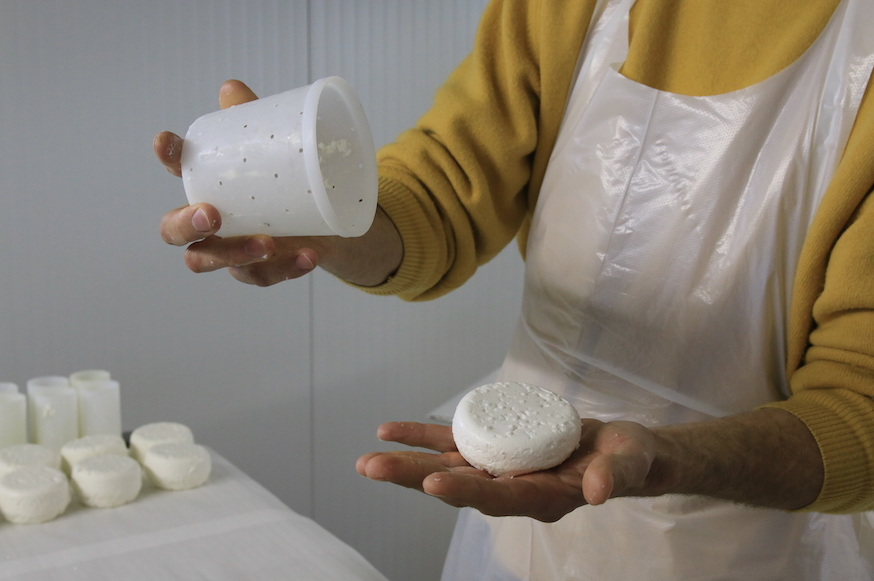
How to make cheese? It is easy, at home, and without a great tool, make cheese.
In particular, one can easily make the lactic type cheese. Other cheeses require more attention, precision and handling. In addition, lactic type cheese for transforming small amounts of milk (2 or 3 liters).
To make cheese, you have to follow certain steps.
How to make cheese?
- Step 1: purchase of milk. The ideal is to get milk on a farm. But supermarkets often sell raw milk. One can also make cheese using pasteurized milk (it will put more enzymes to compensate for the poverty of milk: damage). It takes at least two liters of milk.
- Stage 2: Inoculation of the milk The milk must be at a temperature between 16 and 23 °. Ideally 20-22 °. It is then mixed with milk ferments. The enzymes can be: a whey cheese, cottage cheese, or cottage cheese, or a small Swiss, ferments or purchased commercially (Streptococcus lactis and Streptococcus cremoris). As regards the whey (serum), there should be 0.5 to 1% of the quantity of milk, and 2 to 3% when using pasteurized milk. Or 2 liters of raw milk, 10-20 g serum, that is to say one or two tablespoons. The mixture should be done gently: do not brutalize milk, otherwise we risk lipolysis, that is to say the destruction of fat (and the cheese is ripened, it may not have a homogeneous paste it also may have a rancid taste). When a small Swiss is used, it must first mix the small Swiss with milk to make it liquid, and then incorporated into the milk. We must then ensure milk seeded let stand at a temperature between 20 and 22 ° for about 2 hours.
- Step 3: renneting First some indication of rennet: standard rennet contains 520 mg of chymosin per liter. Is said to have a strength of 1/10000 (which means that 1 liter of rennet, which contains 520 mg of chymosin, quail 10000 liters of milk in 40 minutes at 35 °). There are other assays in large bottles, for cow's milk, or to goat's milk, and we find from suppliers to dairies but rennet found in pharmacy bottles toddlers is often standard rennet. Rennet must be stored away from light, in a well sealed container at temperatures below 7 ° C, but even so, long shelf life makes it lose some of its strength.
The amount of standard rennet, to a lactic type cheese, is 3 to 10 ml per 100 liters of milk. It's not much. When only 2-3 liters of milk, 1 or 2 drops of rennet sufficient to do well. When rennet was put into the milk, mix well, always with delicacy.
From that moment, we must let stand the milk is free of vibration at a temperature between 20 and 22 °, for 24 hours to do well. After these 24 hours, you must obtain curd (white mass) and serum (liquid more or less yellow or white). We can take part of this serum for the next production, provided in the refrigerator and use within 24 hours. At this stage, your cheese can be eaten: it is white cheese: it can be beaten.
- Step 4: For the cutting with grinding fresh cheese, it must drain the curd. For this, we need special molds, faisselles. These molds are filled with small holes. We can recover the mold cheeses presented disposable faisselles. One can also use a sieve with small holes, but some operations may not be performed. For 2 liters of milk, 3 to 4 mold sufficient. You need to have mussels on a rack, or a table to drain, or on a plateau high enough edges. Then, with a ladle, fill the molds to the brim and carefully. Wait a while as serum drips, and start to fill.
Let drain for 24 hours to do well. After 24 hours, it must return the cheeses in their molds. This requires a bit of dexterity, since the cheese must be returned in its mold, not in another! There are several methods, some more elegant than others ... everyone to find his own!
After reversal, cheese on sale. It takes about 2 to 3 g per liter. That is to say, to 2 liters of milk, it will allocate one level teaspoon of salt on the whole cheeses. We must wait 24 hours.
- Stage 5: unmolding After these 24 hours, you have to return the molds on a rack fitted with a drip store. Otherwise, we return the molds on a clean towel laid on a dish. We can add salt again, but this time slightly. At this stage, one can consume cheese: it's fresh cheese.
- Step 6: refining and drying. After demoulding, the cheese is placed at a temperature of 15 ° and under a gentle air stream. If you want a dry cheese, leave the cheese stand under these conditions for 1 or 2 days, or even longer depending on the degree of dryness that is desired. If you want a flowing cheese, leave the cheese at a temperature of 20 ° or a little more, avoiding drafts.